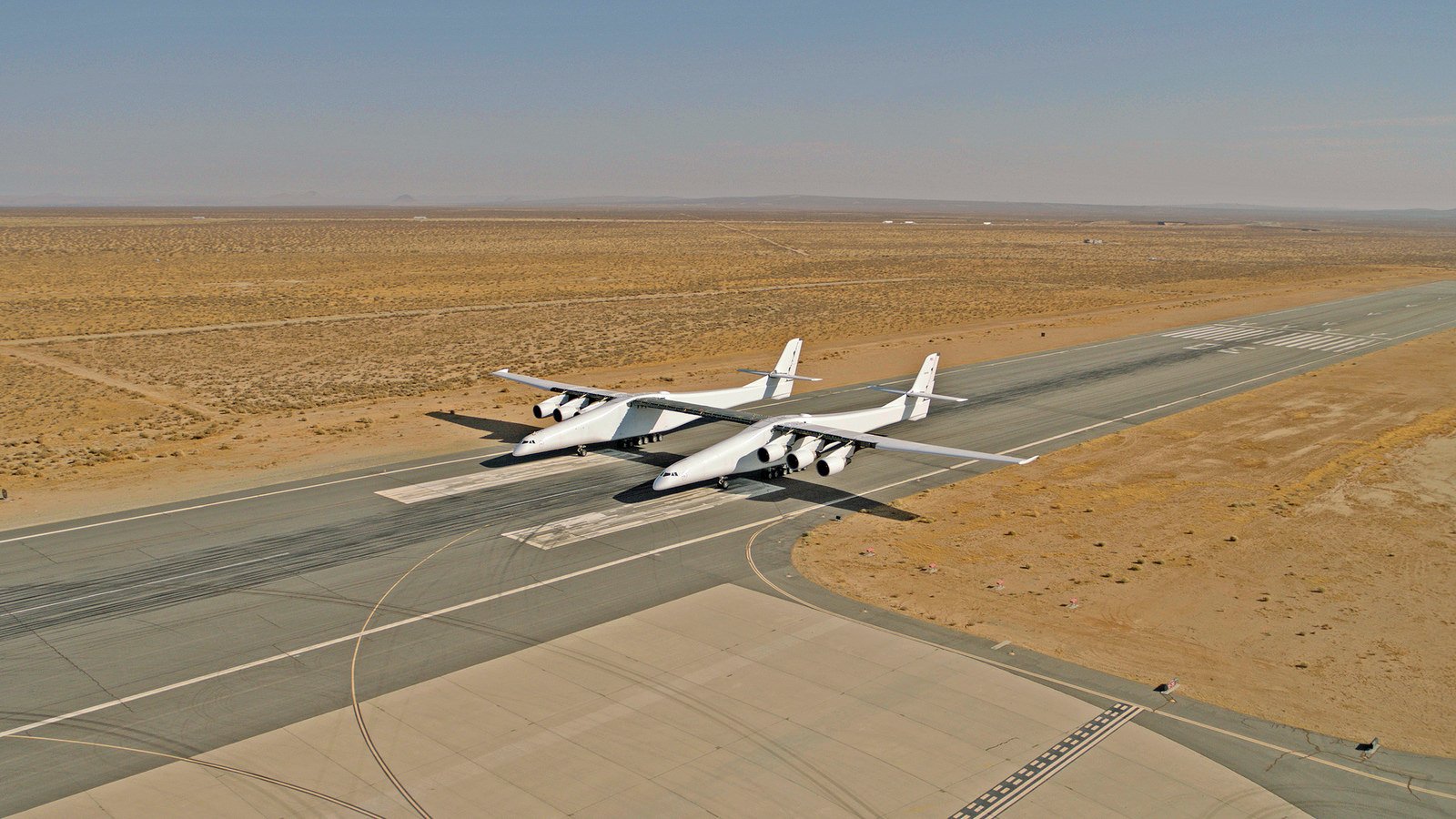Space agencies and other companies are looking for the most efficient method to carry cargo and satellites into space. One of those companies that succeeded at this idea by using reusable rockets is SpaceX. However, the world’s largest airplane, which weighs more than 500,000 pounds and has a wingspan of 385 feet could surpass the company in the future in being the most reliable vehicle for carrying satellites into space. Last Sunday, the Stratolaunch aircraft completed another milestone, including land control tests and a new runway taxi top-speed.
The airplane will be equipped with twin fuselages and six Pratt & Whitney turbofan engines. It’s under development by Paul Allen’s Seattle-based Stratolaunch Systems Corporation. The Stratolaunch airplane would bring rockets up to Earth’s stratosphere starting at roughly 33,000 feet. If the rockets would launch from this altitude, the satellites would enter and orbit low-Earth orbit much easier.
Allen, Microsoft’s co-founder, tweeted this weekend that the world’s largest airplane completed another milestone and had reached a top taxi speed of 46 miles per hour. The test conducted on Sunday was to make sure that the aircraft is capable of steering and stopping using its controls.
“Captured new video of @Stratolaunch plane as it reached a top taxi speed of 40 knots (46 mph) with all flight surfaces in place on Sunday. The team verified control responses, building on the first taxi tests conducted in December,” Allen wrote in his tweet.
Although the flight tests haven’t yet been revealed for the world’s largest airplane, its first flight is likely going to happen next year.
Thanks to some features that it’s equipped with, the Stratolaunch plane will be the largest aircraft to ever lift off. At the moment, that record has been held by the Hughes H-4 Spruce Goose. It has a wingspan of around 320 feet. The maximum takeoff weight of Stratolaunch’s lift system is 590 metric tons. That is pretty massive even compared to today’s largest commercial airlines, such as Boeing 747 planes, which can take off weighing about 300 tons.
This is not the first time that companies have been working on the air-launching of rockets into space. Previously, it has been attempted by aerospace contractor Orbital ATK and the highly modified Lockheed TriStar jet. Furthermore, the U.S. Government’s Defense Advanced Research Projects Agency or DARPA is working on a similar project, and also NASA’s collaborative enterprise and Virgin Group founder Richard Branson have been working on a project dubbed Virgin Orbit.
Nevertheless, the project could be jeopardized thanks to the payload issues. Previous spacecraft have weighed just roughly 1 to 2% of the rocket that takes them into orbit. If the carrying maximum of the world’s largest plane is 550,000 pounds, the payload capacity would need to be between 5 and 10,000 pounds. If we compare this to Elon Musk’s SpaceX boosters, the company’s booster carries more than 50,000 pounds in low-Earth orbit.
The airplane project, started in Jan. 2012, was created in a huge California hangar by Scaled Composites.





